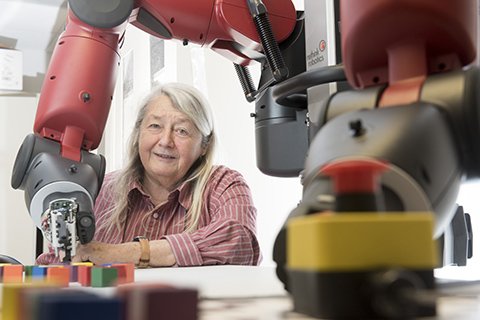Maria Gini: Encountering imbalance

Written by Kermit Pattison
March 6, 2017
Maria Gini, professor of computer science and engineering, encountered gender imbalance first-hand. When she came to Minnesota in 1982, there were no other women in her department.
The gender imbalance, typical at American universities, came as a shock. Raised in Italy, Gini was inspired by a young math and physics teacher, who encouraged Gini and her twin sister to study physics in college.
The Gini twins went through the same university program in Italy and both won fellowships to study artificial intelligence and robotics at Stanford University. In the mid-1970s, Silicon Valley was emerging as a technological hotbed. At Stanford, Gini met another computer science student who displayed great interest in the Italian language, food, and, as it turned out, her. It was Daniel Boley, now her husband and also a professor of computer science and engineering in the same department.
When Gini arrived at the University of Minnesota, she became the first female member in the computer science and engineering department. Until then, she had been only vaguely aware of gender imbalance. In Italy, women made up a large portion of math programs. She quickly discovered that female students were deterred by the lack of women in the field.
“If you look at elementary school, there’s plenty of evidence that girls and boys have equal interest for science,” Gini said, whose own research focuses on autonomous agents (robots and computers programmed to make decisions). “If you do robotics competitions, the girls are just as engaged as the boys. In junior high, there’s social pressure and girls start thinking it’s not cool to be a mathematician or scientist.”
Gini has spent years engineering solutions. She has been active in the Grace Hopper Celebration of Women in Computing Conference and was instrumental in bringing the conference to the Twin Cities in 2013. The annual conference now draws 15,000 people—mostly women—and offers educational sessions and a forum for recruiting. “The main impression people get from the conference—Wow, there are a lot of women here,” Gini said. “For students, it’s a powerful motivator. It gives them that spark—Wow, there are other people like me. I’m not weird.”
Gini also organized the University's Summer Computer Academy, a two-week camp for female high school students. Women comprise only about 18 percent of undergraduates in computer science in the U.S. “We need to get to the women much earlier when they start thinking about their future,” Gini said.
